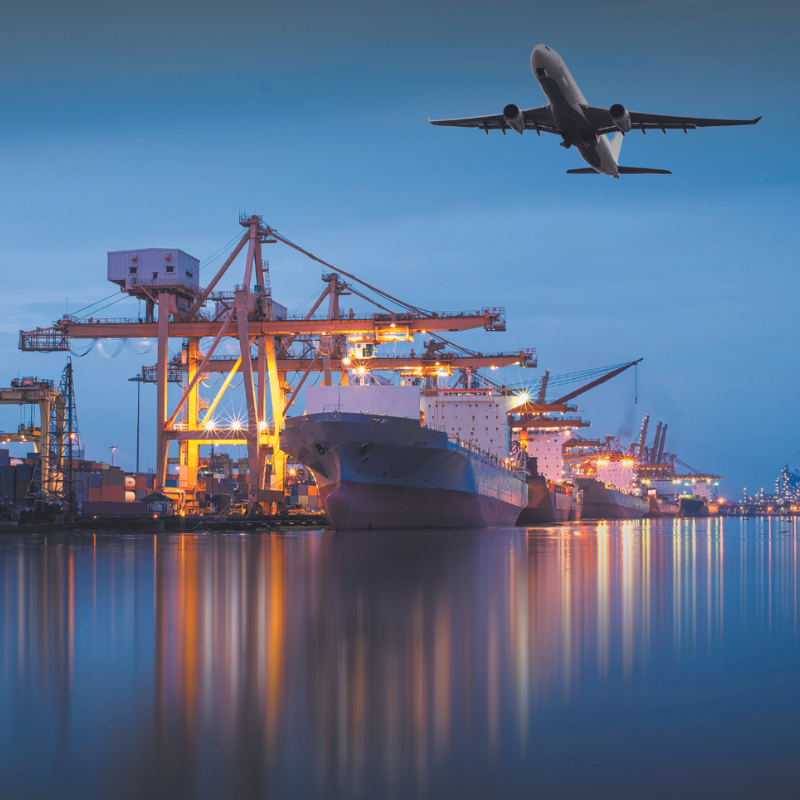Northline’s newest purpose-built depot in Bundamba set to open on 15 July
We are pleased to announce that Northline's Brisbane depot will start operating from our new...
Read moreFreight management services have come a long way in the past few years, especially in Australia. The world of international freight shipping is constantly changing and evolving, requiring new and innovative solutions to be developed to keep up with demand.
Every year infrastructure operators, transportation, and logistics experts move approximately four billion tonnes of goods across the nation– that’s 163 tonnes of freight per person.
In this article, we will discuss the recent innovations in freight management services that have helped Australian businesses keep up with the changes in the international freight shipping industry.
Freight management refers to the process of planning, executing, and controlling the movement of goods and materials from one place to another.
It involves coordinating the activities of carriers, suppliers, and customers to ensure that products are delivered efficiently, cost-effectively, and on time.
Freight management encompasses a range of activities, including:
The goal of freight management is to optimise the supply chain by minimising transportation costs, reducing transit times, and improving the overall efficiency of the logistics process.
The last few years have seen a dramatic shift in the way that freight is managed in Australia. The global pandemic has had an immense impact on the industry, with many Australian shipping companies experiencing disruption to their operations and drastic changes to their supply chains.
On top of this, fuel costs have also been on the rise. This has made it increasingly difficult for freight companies to remain competitive and meet customer demands.
It is clear that the traditional freight management model is no longer sufficient, and companies are being forced to rethink their approach to remain viable.
In response to these challenges, many Australian shipping companies have turned to digital technologies to improve efficiency and reduce costs. Automation, data analysis, and artificial intelligence are now being used to optimise processes and optimise the customer experience. In addition, customers are looking for faster turnaround times, requiring freight management companies to leverage the latest technology to ensure timely deliveries.
All of these factors have contributed to the changing landscape of freight management in Australia.
The growth of e-commerce has revolutionised how Australians shop and receive goods. While this shift has been a boon for consumers, Australian shipping companies are having to respond to a rapidly evolving market in order to stay competitive.
E-commerce has had a huge impact on freight management by increasing the demand for faster turnaround times and more efficient delivery services. As such, freight companies need to be agile and adaptive in order to deliver an excellent customer experience.
The rise of e-commerce means that customers expect their goods to be delivered quickly and efficiently. This means Australian shipping companies must ensure they have the latest technology and techniques in place to meet customer expectations. Freight operators have had to re-evaluate their strategies and invest in better infrastructure, staff training, and processes to meet the demands of the e-commerce market. As a result, Australian shipping companies are now providing more tailored solutions for their clients and working with them to come up with customised delivery options.
The rise of e-commerce has also brought with it a need for more transparency and data-driven decisions. To succeed in the e-commerce space, Australian shipping companies need to be able to track shipments in real-time and monitor any delays or disruptions so they can take the necessary action. Having access to accurate and up-to-date data allows companies to make informed decisions and optimise their operations. This is essential in order to provide a high-quality service that meets customer expectations.
In conclusion, the rise of e-commerce has had a significant impact on freight management in Australia. Companies need to be agile and adaptive, investing in technology, staff training, and processes in order to stay competitive. Data and analytics are also key to success, allowing companies to monitor shipments and make informed decisions quickly. By responding effectively to the changing landscape of freight management, Australian shipping companies can remain at the forefront of the industry.
Our freight task keeps growing Source: https://www.freightaustralia.gov.au/
Freight movement in Australia is a major part of the national economy, accounting for billions of dollars in commerce each year. Goods are moved across the country by truck, rail, air, and sea freight. It is no surprise that freight movement has become an important topic for many businesses.
Road Freight
Trucking is by far the most common method for moving freight in Australia. According to the Australian Bureau of Infrastructure, Transport and Regional Economics (BITRE), trucking accounts for over 80% of all freight movements in the country. This is largely due to its flexibility, allowing businesses to transport goods to locations that may not be accessible via other means.
Rail Transport
Rail is another popular way to move freight in Australia, with BITRE estimating that it accounts for almost 15% of freight movement in the country. While slower than road transport, rail offers several benefits, including a reduction in emissions and minimal impacts on transit times in long-haul movements. Rail also has the advantage of moving large volumes of goods over long distances, making it an ideal choice for companies needing to transport goods across the continent.
Air Freight
Air freight is also popular in Australia, particularly when it comes to urgent deliveries or small packages. According to BITRE, air freight accounted for nearly 4% of freight movements in 2019. While it can be expensive, air freight has the benefit of being extremely quick and reliable, making it a great choice for businesses who need their goods delivered fast.
Sea Freight
Sea freight is another important form of freight movement in Australia, with BITRE estimating that it accounted for almost 1% of all freight movements in 2019. Sea freight is typically used when transporting larger amounts of goods over long distances, such as international shipments or bulk shipments between countries. A drawback of this method is that it can be slow, but it does offer businesses cost savings over air freight and can be a great choice for those shipping goods overseas.
Overall, freight movement in Australia has become increasingly important over the past few years. With e-commerce continuing to grow in popularity, businesses need to be able to move their goods quickly and reliably in order to remain competitive. As such, it’s important to understand the different methods of freight movement available and how they can be used to best meet your needs.
Source: https://www.freightaustralia.gov.au/
Data and analytics are becoming increasingly important in freight management. In the age of e-commerce, customers have higher expectations when it comes to delivery speed and accuracy. This means that businesses must be able to quickly and accurately manage their freight operations.
Data and analytics allow businesses to track their goods in real-time, meaning they can easily adjust their operations to meet customer demands. They can also use data to gain insights into their operations, allowing them to better optimise their processes and increase efficiency.
Analytics also help businesses anticipate potential delays or problems before they occur. By monitoring trends in the data, businesses can identify areas where they need to adjust their operations in order to reduce risks and increase profits.
Data and analytics also provide a wealth of information about customer behaviour. This allows companies to better understand their customer’s needs and preferences, enabling them to provide better service and increase customer satisfaction.
Data and analytics are essential tools for businesses looking to stay competitive in the freight management industry. By leveraging these tools, businesses can gain insights into their operations, identify areas for improvement, and improve customer service. As such, it is essential that businesses continue to invest in data and analytics in order to remain competitive.


We are pleased to announce that Northline's Brisbane depot will start operating from our new...
Read more
Northline’s long-standing partnership with the NT Minnows continued this year, assisting...
Read more